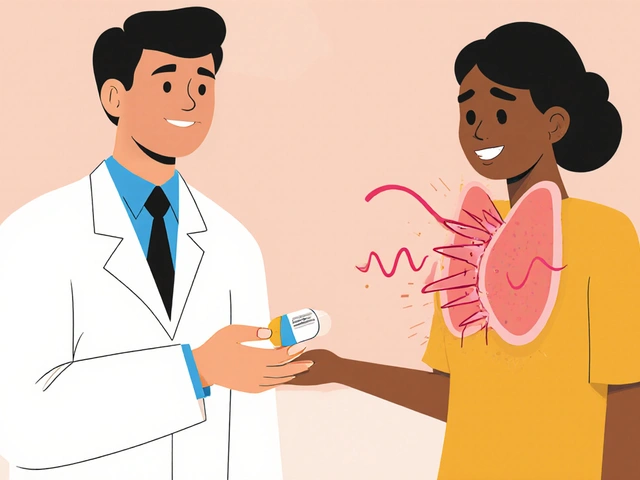Calcium Acetate Interactions: A Practical Guide
If you take calcium acetate as a phosphate binder, you probably want to know what else might mess with it. The good news is the list isn’t huge, but a few common medicines, foods, and health issues can change how well it works or raise the risk of side effects. Below you’ll find the main culprits and easy steps to keep everything in balance.
Common Drug Interactions
Most prescription meds don’t clash with calcium acetate, but a handful do enough to worry about. Here are the ones you should watch:
Iron supplements – Calcium can block iron absorption. If you need both, take them at least two hours apart. That way each gets a chance to be absorbed.
Antacids containing aluminum or magnesium – These can bind with calcium acetate and lower its ability to capture phosphate. Space them out by a few hours, or ask your doctor if a different antacid works better.
Certain antibiotics like tetracyclines (e.g., doxycycline) and fluoroquinolones (e.g., ciprofloxacin) also bind to calcium. Pull the calcium acetate pill away from the antibiotic dose – again, a two‑hour gap is a safe rule.
Blood pressure meds such as ACE inhibitors or ARBs usually don’t interact, but if you’re on a high dose of calcium acetate you might see a small rise in blood calcium. Your doctor will check blood tests, but you can help by reporting any unusual tingling or muscle cramps.
For any new prescription, just ask the pharmacist if calcium acetate could affect it. A quick question can prevent a headache later.
Food & Health Conditions to Watch
Calcium acetate works in the gut, so what you eat can tip the balance. Dairy, fortified foods, and calcium‑rich veggies already add calcium to your diet. Too much extra calcium can lead to high blood calcium levels, especially if your kidneys aren’t filtering well.
If you have chronic kidney disease (the main reason most people take calcium acetate), keep an eye on your overall calcium intake. Your dietitian can give you a target – often around 800‑1000 mg per day total, including the binder.
Vitamin D supplements boost calcium absorption. While they’re often needed, combine them with calcium acetate only under medical supervision. Too much vitamin D can push calcium levels up fast.
Alcohol doesn’t directly interfere, but heavy drinking can worsen kidney function and make calcium balance harder to manage. Moderation is a safe bet.
Finally, watch for signs of high calcium: nausea, vomiting, frequent thirst, or muscle weakness. If any of these pop up, call your healthcare provider – they might adjust your dose or suggest a different binder.
Bottom line: keep a simple routine. Take calcium acetate with a meal, separate it from iron, antibiotics, and antacids by a couple of hours, and stick to your diet plan. A quick chat with your pharmacist or doctor when you start a new drug will keep surprises at bay.
Staying on top of these interactions helps calcium acetate do its job – lowering phosphate levels without causing extra problems. Keep the list handy, ask questions, and you’ll manage your health with confidence.
Calcium Acetate Drug Interactions: In‑Depth Review & Practical Guide
A comprehensive look at calcium acetate drug interactions, comparing it to other phosphate binders, with clear management tips and a handy FAQ.






